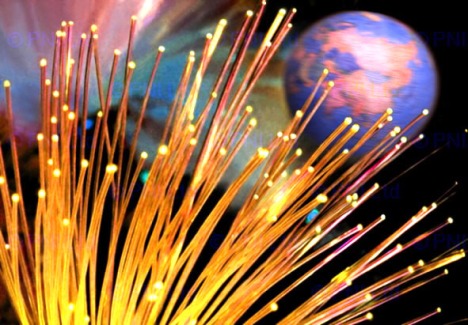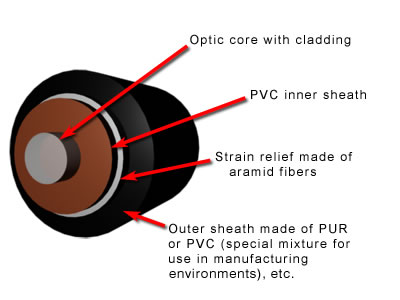Assignment #1 Augmented Reality
What is augmented reality?
Actually, Augmented Reality…. is new to my ears. I’ve learned a lot in about date communications, and AR is part of it, but quite frankly, I haven’t really made an in-depth research on the topic. i’m glad that now I got the chance to really look into it. So searching for its definition, this is what I came up with..
Augmented reality (AR) is the integration of digital information with live video or the user’s environment in real time.
One of the first commercial applications of AR was graphic displays superimposed over televised sports, such as the trail tracking the puck in play in a hockey game or the yellow first down line in football. More recent AR systems may superimpose graphics over a cell phone image or project an interactive display on a real world surface.
The Layar browser, for example, displays information about local businesses and services over their locations on a phone’s camera image. Wikitude, a browser for phones running the Android operating system, displays information, mostly drawn from Wikipedia, about the user’s current environment over images of that environment seen through the phone’s display.
AR applications are often based on smartphone displays, head-mounted gear, eyeglasses or contact lenses to overlay the user’s view with information. Current implementations of AR usually involve computer graphics but integrated sounds, smells and tactile information are also possible.
AR employs a number of sophisticated technologies including machine vision, object recognition and gesture recognition. AR applications for smartphones use a device’s global positioning system (GPS) to pinpoint the user’s location and its compass to detect device orientation. With that information, it’s possible to make an educated guess at what the user is looking at. Information can then be drawn associated with those locations.
JAN DARRYL SOLIVAS
MMIT
Assignment #2: IPX/SPX
All i know before is that I have to activate this protocols as the standard set of rules in transmitting data through medium to link games. According to wiki IPX/SPX is
PX/SPX stands for Internetwork Packet Exchange/Sequenced Packet Exchange. IPX and SPX are networking protocols used primarily on networks using the NovellNetWare operating systems.computer protocols.
IPX only loads when you log on to a network, so it doesn’t take up unnecessary resources. As some video game players may know, IPX used to be the standard protocol for network games. SPX is a transport layer protocol.
Both are similar to TCP/IP, which is prevalent and more practical to use on Wide Area Networks (WANs). In fairness to IPX/SPX, which was designed to run on LANs (Local Area Network), they are better for this purpose than TCP/IP. The decline in use of IPX/SPX was due to the popularity of the Internet. IPX/SPX can be used for this purpose, but it was not built to run on WANs.
IPX/SPX is still used today for bypassing VPNs (Virtual Private Network). TCP/IP cannot perform on VPNs as well as IPX/SPX on bypassing VPNs as it will prevent access to local resources such as printers and shared disks.
JAN DARRYL SOLIVAS
MMIT
Assignment#3: Bluetooth
Brian storming. Data communication class makes me explore more about new technology. It never came to my mind that bluetooth was a once a King. This is what i got.
History: Harald I Bluetooth (Danish Harald Blåtand) was the King of Denmark between 940 and 985 AD. The name “Blåtand” was probably taken from two old Danish words, ‘blå’ meaning dark skinned and ‘tan’ meaning great man.
A little more than 1000 years later, succumbing to an attack of Scandinavian pride, the giant Swedish telecom manufacturer Ericsson decided to honor old, weird Harald by naming its new wireless networking standard after him. It convinced founding Special Interest Group co-partners Nokia, Toshiba, IBM and Intel that Bluetooth was the right name for the thing and, together, they set off to conquer the air.
JAN DARRYL SOLIVAS
MMIT
On line interaction 1.A
#1. Line coding converts switches (1 and 0′s) to digital signal. True or false?
Line coding converts (1 and 0′s) to digital is true, where line coding is the process of converting binary data, a sequence of bits to a digital signal. Which involves conversion of standard logic levels to a form more suitable to telephone line transmission.
Line encoding format sample:
UPNRZ – Unipolar non-return to Zero
UPRZ – Unipolar Return to Zero
 https://bacunawa.wordpress.com/wp-content/uploads/2010/08/line-encoding1.jpg
https://bacunawa.wordpress.com/wp-content/uploads/2010/08/line-encoding1.jpg
JAN DARRYL SOLIVAS
MMIT
Java Emulator
http://www.youtube.com/watch?v=RffGvJz87QI
JAN DARRYL SOLIVAS
MMIT
Assignment #4 Fiber Optic



Optical fibers are widely used in fiber-optic communications, which permits transmission over longer distances and at higher bandwidths (data rates) than other forms of communication. Fibers are used instead of metal wires because signals travel along them with less loss and are also immune to electromagnetic interference.
JAN DARRYL SOLIVAS
MMIT
Assignment #5 Characteristics of Line Coding
What is line coding?
Line coding consists of representing the digital signal to be transported by an amplitude- and time- discrete signal that is optimally tuned for the specific properties of the physical channel (and of the receiving equipment). The waveform pattern of voltage or current used to represent the 1s and 0s of a digital signal on a transmission link is called line encoding. The common types of line encoding are unipolar, polar, bipolar and Manchester encoding.
Line coding should make it possible for the receiver to synchronize itself to the phase of the received signal. If the synchronization is not ideal, then the signal to be decoded will not have optimal differences (in amplitude) between the various digits or symbols used in the line code. This will increase the error probability in the received data.
It is also preferred for the line code to have a structure that will enable error detection.
Note that the line-coded signal and a signal produced at a terminal may differ, thus requiring translation.
A line code will typically reflect technical requirements of the transmission medium, such as optical fiber or shielded twisted pair. These requirements are unique for each medium, because each one has different behavior related to interference, distortion, capacitance and loss of amplitude.
JAN DARRYL SOLIVAS
MMIT
Assignment #6 Unit of Periodic Frequency
Frequency is the number of occurrences of a repeating event per unit time.
A traditional unit of measure used with rotating mechanical devices is revolutions per minute, abbreviated RPM. 60 RPM equals one hertz.
The period, usually denoted by T, is the length of time taken by one cycle, and is the reciprocal of the frequency f:
T=1/f
Measurements is by:
- Counting
- Stroboscope
- Frequency counter
- Heterodyne methods
JAN DARRYL SOLIVAS
MMIT
Assignment #7 BNC Connector
I first encounter it in assembling a TV antenna and radios. And saw the familiar cable in computer labs and still used until now. it is used as a medium in data communication (According to Wiki) It is:
The BNC (Bayonet Neill-Concelman) connector is a common type of RF connector used for the coaxial cable which connects much radio, TV and other radio-frequency electronic equipment.
JAN DARRYL SOLIVAS
MMIT


Leave a comment